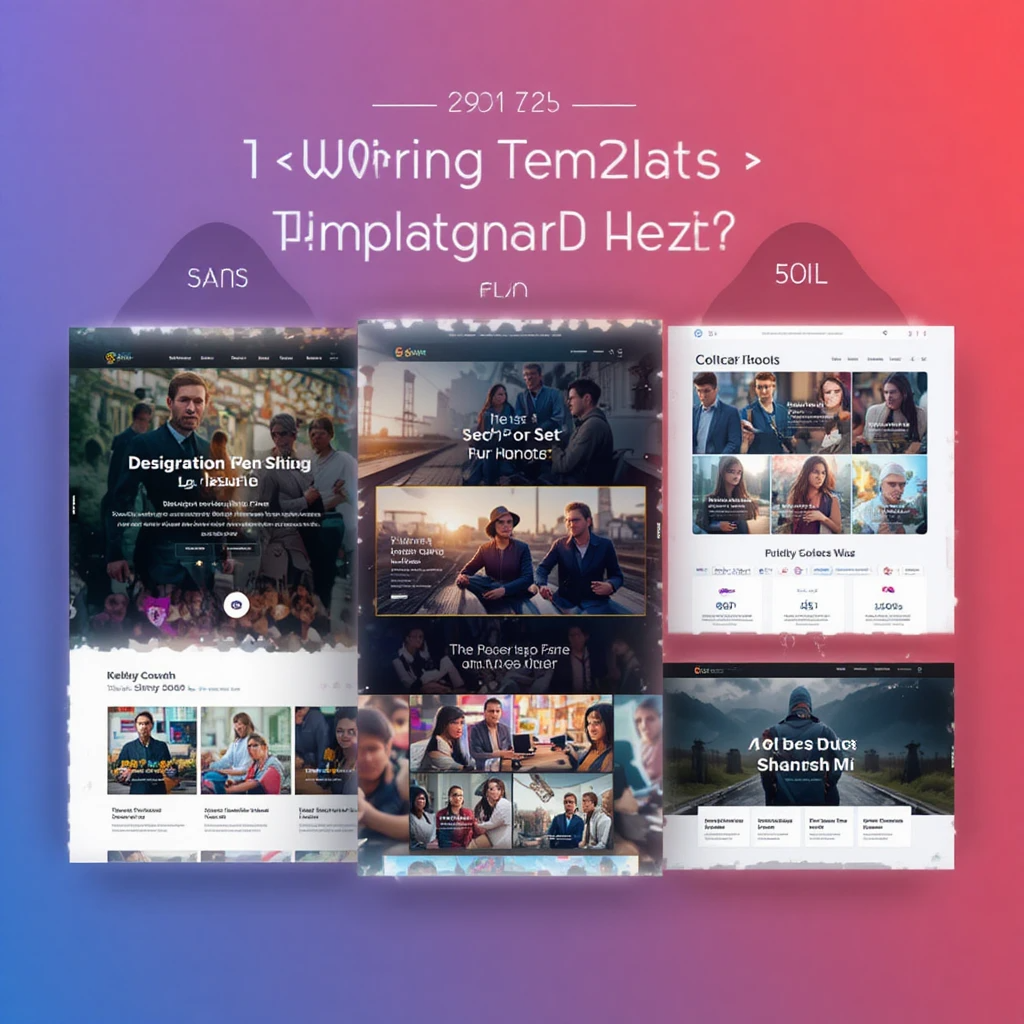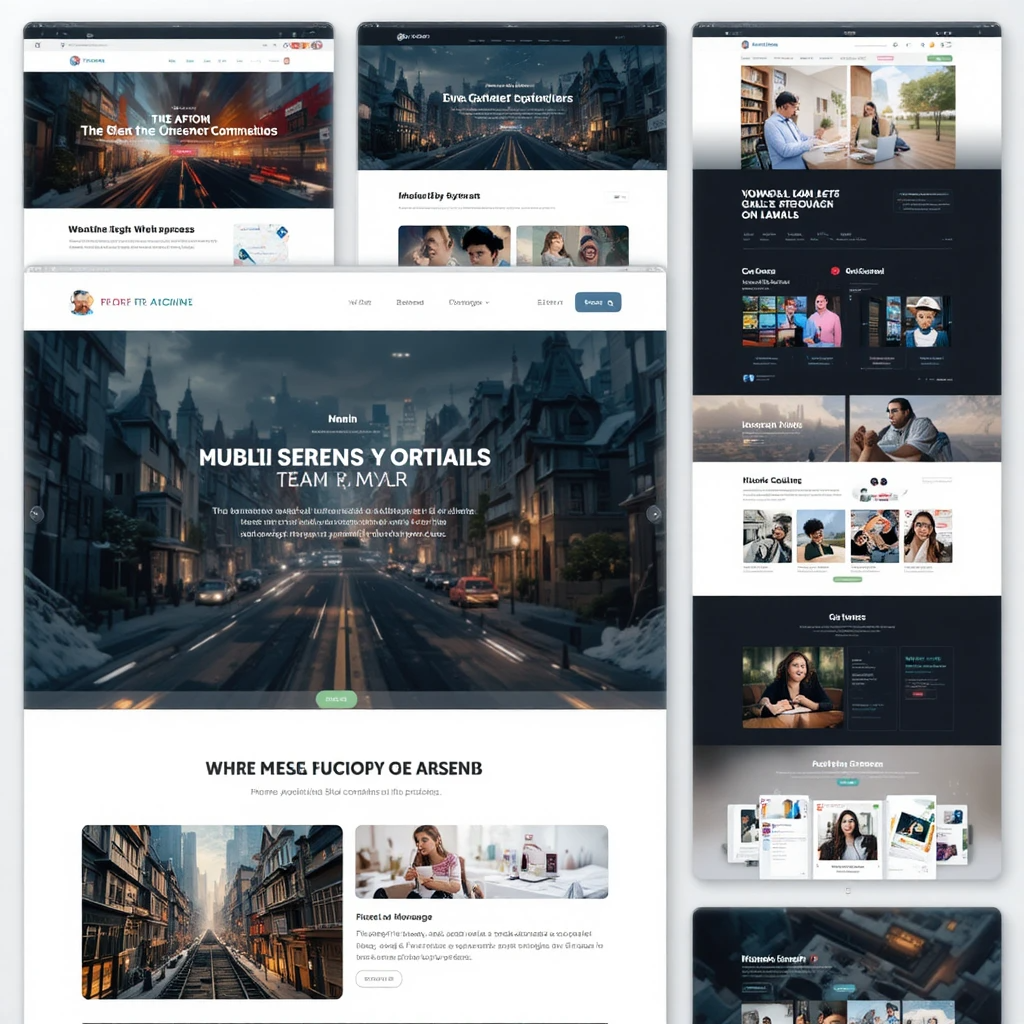One of the most effective ways to spread ideas, develop a personal brand, and even make money is still blogging. The competition is more intense than ever in 2025, so having an eye-catching, quick-loading, and SEO-optimized blog templates is essential. Selecting the appropriate blog template helps your content reach a larger audience by increasing search engine rankings and improving user experience.
1. The Importance of Selecting the Correct Blog Templates
A blog template’s functionality and performance are just as important as its appearance. The appropriate template guarantees:
- Responsive Design: Your blog should be flawless on desktop, tablet, and mobile devices. The layout of a responsive template automatically adapts to any screen size.
- Quick Loading: Users and Google favour blogs that load quickly. Bounce rates are decreased by lightweight, speed-optimized templates.
- SEO Optimisation: Search engine rankings are enhanced by integrated SEO-friendly components like clean code, appropriate headings, and schema markup.
- Options for Customisation: Without the need for sophisticated coding skills, bloggers can modify colours, fonts, layouts, and widgets using flexible templates.
2. Contemporary Blog Templates for 2025
Functionality, aesthetic appeal, and minimalism are key components of contemporary blog templates. Qualities to search for consist of:
- Clean Layouts: Readers are better able to concentrate on content when designs are straightforward and uncluttered.
- Visual Hierarchy: When headings, images, and spacing are used correctly, readers are guided through your posts organically.
- Integrated Multimedia Support: Images, videos, infographics, and podcasts should all be easily supported by templates.
- Typography & Colour Schemes: To improve readability and engagement, contemporary templates make use of readable fonts and eye-catching colour schemes.
3. Quick and Compact Templates
In 2025, speed is essential. According to studies, a one-second page load delay can result in a 7% decrease in conversions. Quick templates have:
- Optimised Code: Use as little HTML, CSS, and JavaScript as possible to lighten the page.
- Lazy Loading Images: To speed up initial load times, images only load when users scroll to them.
- Quick Hosting Compatibility: Templates made to work well on well-known hosting services like Blogger, Wix, and WordPress.
4. Templates with SEO Optimisation
A blog’s secret weapon is an SEO-friendly template. Important characteristics consist of:
- Schema Markup: Enhances rich snippets in SERPs by assisting search engines in comprehending your content.
- Optimised Headings: Appropriate H1, H2, and H3 tags enhance the structure of content for search engines.
- Quick Mobile Performance: Google places a high priority on mobile indexing, so templates need to function well on smartphones.
- Clean URLs and Structured Navigation: Crawling efficiency is increased by templates that include sitemaps, breadcrumbs, and logical menus.
5. Top Features to Look for in Blog Templates
When choosing a blog template, focus on features that enhance user experience and SEO:
- For mobile users, responsive design is crucial.
- Customisation Options: Modify layouts, fonts, and colours with ease.
- Promote your content straight from your blog through social media integration.
- Ad-Friendly Layouts: Templates that facilitate the placement of advertisements without interfering with the user experience.
- Accessibility Features: Make sure the template satisfies all users’ accessibility requirements.
- Frequent Updates: Keep your blog safe and up to date with emerging technologies.
6. Popular Platforms and Templates in 2025
Different platforms offer a choice of templates. Some popular ones include:
- WordPress: Offers dozens of modern, SEO-optimized templates like Astra, GeneratePress, and OceanWP.
- Blogger: Free and lightweight templates great for beginners.
- Wix & Squarespace: Drag-and-drop templates with outstanding visual design and responsive layouts.
Choosing a template depends on your technical skills, blogging goals, and audience preferences.


7. How to Make Your Blog Template Unique
To fit your brand, even the best template needs to be modified:
- Modify fonts and colours to fit your brand’s identity.
- Increase functionality by adding widgets and plugins, such as social sharing buttons or email subscriptions.
- Optimise Images: For quicker load times, compress images.
- Test Performance: Make sure your blog loads fast and functions properly by using tools like Google PageSpeed Insights.
8. Errors to Avoid When Selecting a Template
Steer clear of templates that could negatively impact your blog’s SEO or performance:
- Overloaded Templates: Your blog will run more slowly if it has too many animations or complex scripts.
- Non-Responsive Designs: Templates that are not optimised for mobile devices can lower traffic and rankings.
- Inadequate SEO Structure: Templates that lack appropriate headings or schema markup may be less visible.
- Limited Customisation: Your blog may appear generic if you are unable to change layouts or colours.
In conclusion
Modern design, speed, and SEO optimisation must all be balanced when choosing the best blog template for 2025. A well-selected template makes your blog stand out in a crowded field, boosts search engine rankings, and improves user experience. In addition to making your blog aesthetically pleasing and simple to use, always prioritise responsiveness, quick performance, and SEO-friendly features.
Your blog can expand more quickly, draw in more readers, and accomplish your long-term blogging objectives with the correct template.





